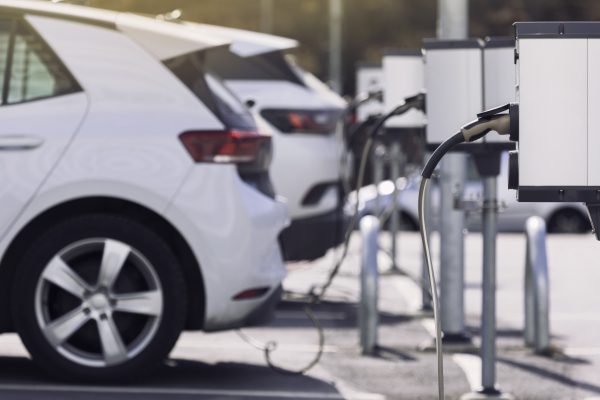This week, the Environmental Protection Agency (EPA) announced new guidelines for tailpipe emissions. For all intents and purposes, the changes will effectively kill gas and diesel engines in the United States. Not surprisingly, this was the intent.
After all, the EPA doesn’t have the authority to outlaw internal combustion engines in the country. That is rightfully a market decision. However, it can make the environmental standards so Draconian as to make them uneconomical for both producer and consumer.
To that end, the goal is to have electric vehicles (EV) account for roughly 54% of all units sold in just seven years. Currently, they are about 7.2%.
Obviously, that is a huge shift in a short period of time. But is it feasible? My kneejerk reaction is it won’t be easy. Can auto manufacturers retool their factories? Of course, but it won’t be cheap. Can they engineer the right designs? I would hope that would be the easiest obstacle to clear. Will they be able to get all of the necessary component parts? Based on current global capacity, that is less than certain.
Will they be able to source everything in the United States?
Given the fact China accounts for 56% of the EV battery market, Korea accounts for 26% and the Japanese for another 10%, the answer to the last question is a definitive no. Further, given the strains in Sino-American relations, the next to last question is in serious doubt. Then, do we really want Beijing to have that much control over our transportation system?
Still, these hurdles won’t be the hardest to clear. Far from it.
The U.S. electrical grid won’t be able to accommodate the EPA mandate
Simply put, even if the auto industry can produce the necessary cars, the U.S. electrical grid won’t be able to accommodate the mandate.
Well, it might be able to do so if it can pull an 800 lb. rabbit out of a hat. After all, if it can do that, it can do just about anything.
It is just math.
- Currently, there are an estimated 2 million vehicles in our country.
- Further, the average American drives roughly 14K miles each year.
- Finally, the average EV uses around 0.32 kWh of electricity/power per mile.
Are we having fun yet?
This means IF EVERY vehicle in the US was an EV, it would require approximately 1.20 trillion kWh of additional capacity in order to keep them charged. To put that number into perspective, last year (2022), the US produced a shade over 4.24 trillion kWh.
Given the relative small size of the current EV fleet, we will/would have to increase electricity production by around 28% to make Washington’s EV dreams come true.
But, hey, Norris. The utilities have a long time to make this happen. After all, you are assuming every vehicle is EV, not just 54% in 7 years. Am I right? Yes and no.
Yes, the number is excess of 28% to get to 100%. To get to 54%, our electric utilities would only have to increase output by 15%, or a little over 2% until 2030. That doesn’t seem too Herculean, does it?
Not really, until you consider US production peaked 5-years ago at 4.222 trillion kWh, and is basically unchanged from where it was in 2008 at 4.152 trillion kWh. In essence, the sector hasn’t increased its capacity over the last 15 years, and it is now supposed to come up with an additional 15% by the end of the decade?
Well, I guess they will just have to put up some new power plants, right? Sure, it is as easy as that since time and money apparently aren’t issues. But what sort should we build? Hmm. Decisions…decisions.
I assume no one wants to add any coal-powered facilities, so I am going to exclude them. The cost of nuclear reactors is prohibitive, so those get the axe, too. Also, damming up rivers for hydropower destroys wetlands and kills wildlife, which are no-no’s these days.
That leaves us with three primary options:
- Natural Gas
- Wind
- Solar
Which to use? Which is the most economically efficient?
Natural gas is, hands-down, the clear winner. From what I could find, the average cost of constructing a natural gas power plant is around $812 per kWh. Wind was next efficient at $1,661 per kWh, and solar was a distant last at $2,921 per kWh.
When took all of the data I have already spouted off in this blog, to get from 7.2% to 54.0%, using nominal dollars, it would cost the following to add the necessary 560.6 billion kWh by 2030.
- For natural gas plants $ 455.2 billion
- For wind farms/plants $ 931.1 billion
- For solar farms/plants $ 1,637.5 billion
Obviously, that is a lot of money, let alone space. Goodness gracious, wind and solar farms are massive. For instance, the largest wind farm in the US is the Alta Wind Energy Center in California. It has 600 turbines with annual net output of 3,189 gWh operating on 130 km2 of land.
If my math is correct, in order to generate the necessary 560.6 billion kWh, we would need another 176 wind farms the size of the largest one in the United States.
This would require almost the entire land area of New Hampshire. To get to 100%, the sector would need an additional 349.25 farms with a land of area of approximately New Hampshire and Vermont combined. Hey, that might not seem like a lot to some, and there is all that empty space in the Rockies and upper Midwest, you know?
Whew. That is a lot of physical space to get up and running in 7 years. Who is going to do it? The electric utilities? Okay, with what? Wishcoin?
Here is some perspective. Atlanta-based Southern Company generated net income of $3.524 billion on $29.3 billion in revenue in fiscal year 2022. For its part, Duke Energy brought home $4.298 billion on $29.136 billion. As you probably know, these are two of the biggest electric producers in the United States.
So, combined, these two companies made $7.822 billion last year. Using that number, it would take 58.2 years of combined profitability to build natural gas plants to produce the necessary capacity by 2030. For grins, it would take 119 years of profitability to build enough wind farms. Finally, it would require 209 years of profits to put up enough solar capacity.
That is just the production facilities. It doesn’t take into account all the necessary ‘grid’ and line work, let alone workers. It would be almost impossible to predict these. However, you can be sure of one thing: moving forward, you can expect to pay more money for the electricity needed to charge your vehicles. Strangely enough, even ironic, is the fact most of it will come from fossil fuels.
Weird, huh?
In the end, the EPA threw out some pretty aggressive emissions goals this week. Even if the auto industry can meet them, brother, it will be no small feat for the electric utilities to do so. The money, space and workers have to come from somewhere, and in a hurry, by 2030.
Maybe they are hiding in a magician’s hat somewhere. Washington appears to think so.
Thank you for your continued support. As always, I hope this newsletter finds you and your family well. May your blessings outweigh your sorrows on this any every day. Also, please be sure to tune into our podcast, Trading Perspectives, which is available on every platform.
John Norris
Chief Economist & Energy Magician

Please note, nothing in this newsletter should be considered or otherwise construed as an offer to buy or sell investment services or securities of any type. Any individual action you might take from reading this newsletter is at your own risk. My opinion, as those of our Investment Committee, is subject to change without notice. Finally, the opinions expressed herein are not necessarily those of the rest of the associates and/or shareholders of Oakworth Capital Bank or the official position of the company itself.



